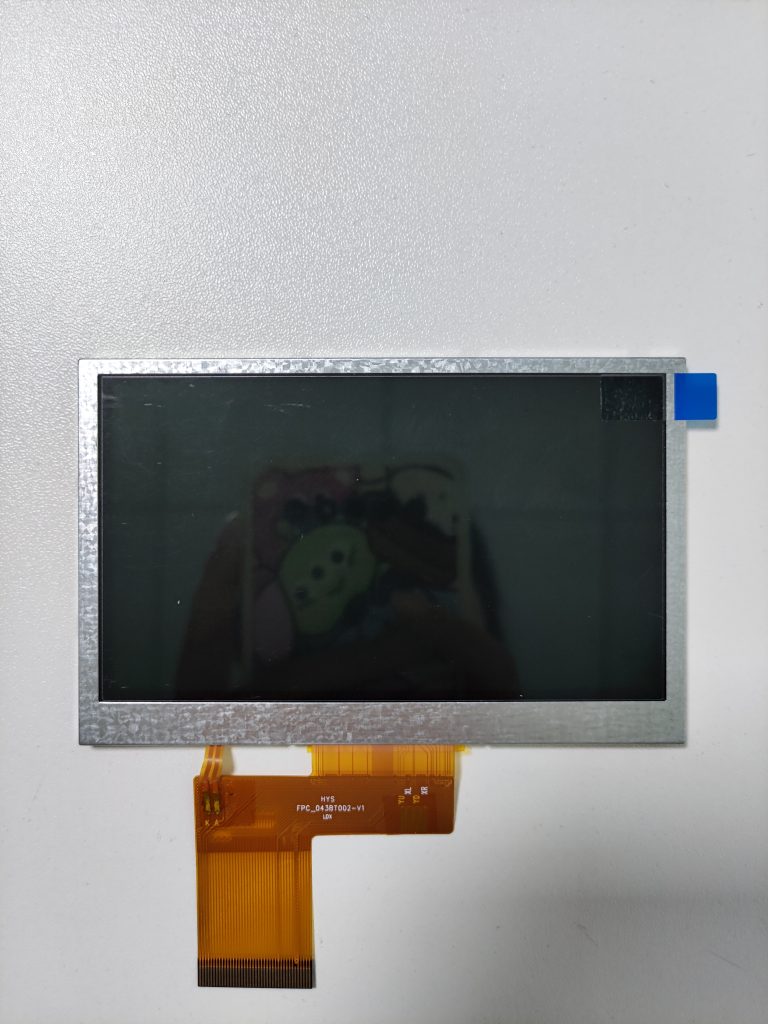Table of Contents
The Evolution of TFT Display Technology
TFT display technology has revolutionized the way we interact with electronic devices. TFT, which stands for thin-film transistor, is a type of liquid crystal display (LCD) that uses thin-film transistors to control each individual pixel on the screen. This technology has become increasingly popular in recent years due to its high resolution, fast response times, and vibrant colors.
The evolution of TFT display technology can be traced back to the early 1980s when researchers began experimenting with thin-film transistors as a way to improve the performance of LCD screens. By the mid-1990s, TFT displays had become the standard for laptops, desktop monitors, and televisions, thanks to their ability to produce sharp images and consume less power than traditional cathode ray tube (CRT) displays.
One of the key advantages of TFT displays is their ability to produce high-resolution images. Each pixel on a TFT display is controlled by its own thin-film transistor, allowing for precise control over the color and brightness of each individual pixel. This results in sharper images with more vibrant colors and better contrast ratios than traditional LCD displays.
In addition to their high resolution, TFT displays also offer fast response times, making them ideal for applications that require quick refresh rates, such as gaming and video playback. The thin-film transistors used in TFT displays can switch on and off rapidly, allowing for smooth motion and reduced motion blur.
Another benefit of TFT display technology is its energy efficiency. Because each pixel on a TFT display is controlled by its own transistor, only the pixels that need to be illuminated are powered on, reducing overall power consumption. This makes TFT displays ideal for portable devices such as smartphones and tablets, where battery life is a critical factor.
As TFT display technology has continued to evolve, manufacturers have introduced new features and improvements to enhance the user experience. For example, some TFT displays now incorporate in-plane switching (IPS) technology, which improves viewing angles and color accuracy. This makes TFT displays suitable for applications where multiple users need to view the screen from different angles, such as in a conference room or classroom.
In recent years, TFT displays have also become more affordable, making them accessible to a wider range of consumers. This has led to their widespread adoption in a variety of devices, from smartphones and tablets to digital cameras and automotive displays.
Looking ahead, the future of TFT display technology looks promising. Researchers are constantly working on new innovations to improve the performance and efficiency of TFT displays, such as flexible displays that can be bent or folded without damaging the screen. These advancements will continue to drive the evolution of TFT display technology and shape the way we interact with electronic devices in the years to come.
In conclusion, TFT display technology has come a long way since its inception in the 1980s. With its high resolution, fast response times, and energy efficiency, TFT displays have become an essential component of modern electronic devices. As technology continues to evolve, we can expect to see even more exciting developments in TFT display technology that will further enhance our viewing experience and expand the possibilities of what electronic devices can achieve.
Understanding the Benefits of TFT Displays
Thin Film Transistor (TFT) displays have become a ubiquitous technology in our daily lives, found in everything from smartphones and tablets to computer monitors and televisions. But what exactly does TFT display mean, and what are the benefits of this technology? In this article, we will explore the meaning of TFT displays and delve into the advantages they offer over other display technologies.
TFT displays are a type of liquid crystal display (LCD) that use thin film transistors to control each individual pixel on the screen. This allows for faster response times, higher contrast ratios, and improved color accuracy compared to traditional LCD displays. The thin film transistors are integrated directly onto the glass substrate of the display, allowing for a more compact and efficient design.
One of the key benefits of TFT displays is their ability to produce vibrant and sharp images with excellent color reproduction. This is achieved through the use of individual transistors for each pixel, which allows for precise control over the amount of light that passes through each pixel. This results in a more accurate representation of colors and improved image quality overall.
Another advantage of TFT displays is their fast response times, which make them ideal for applications that require smooth motion, such as gaming or watching videos. The thin film transistors can switch on and off quickly, allowing for rapid changes in pixel brightness and color. This results in a more fluid and responsive viewing experience, with minimal motion blur or ghosting.
TFT displays also offer high contrast ratios, which contribute to a more immersive viewing experience. The ability to produce deep blacks and bright whites enhances the overall clarity and detail of images on the screen. This is particularly important for applications such as graphic design or video editing, where accurate color representation and contrast are essential.

In addition to their visual benefits, TFT displays are also energy-efficient, consuming less power than other display technologies. This is due to the use of thin film transistors, which require less energy to operate compared to traditional LCD displays. This not only reduces energy consumption but also helps to extend the battery life of devices such as smartphones and laptops.
TFT displays are also known for their durability and reliability, making them a popular choice for industrial and commercial applications. The integrated thin film transistors are less prone to damage from external factors such as temperature fluctuations or mechanical stress, ensuring consistent performance over time. This makes TFT displays a cost-effective solution for businesses looking for long-lasting and reliable display technology.
In conclusion, TFT displays offer a range of benefits that make them a popular choice for a wide variety of applications. From vibrant colors and sharp images to fast response times and energy efficiency, TFT displays provide a superior viewing experience compared to other display technologies. Whether you are using a smartphone, tablet, computer monitor, or television, chances are you are already benefiting from the advantages of TFT displays.
How TFT Displays are Revolutionizing the Consumer Electronics Industry
TFT display, or Thin Film Transistor display, is a type of liquid crystal display (LCD) that uses thin film transistors to control each individual pixel on the screen. This technology has revolutionized the consumer electronics industry by providing high-quality, vibrant displays that are used in a wide range of devices, from smartphones and tablets to televisions and computer monitors.
One of the key advantages of TFT displays is their ability to produce sharp images with high contrast and brightness levels. This makes them ideal for applications where image quality is crucial, such as in medical imaging equipment or professional photography monitors. Additionally, TFT displays are known for their fast response times, which makes them well-suited for gaming and other applications that require quick refresh rates.
Another benefit of TFT displays is their energy efficiency. The use of thin film transistors allows for precise control over each pixel, which helps to reduce power consumption compared to other types of displays. This is particularly important for portable devices like smartphones and tablets, where battery life is a major concern for consumers.
TFT displays also offer a wide viewing angle, meaning that the image remains clear and vibrant even when viewed from the side. This makes them ideal for devices that are shared among multiple users, such as televisions or digital signage displays. Additionally, TFT displays are available in a variety of sizes and resolutions, making them versatile enough to be used in a wide range of applications.
In recent years, TFT displays have become increasingly popular in the automotive industry. Many modern cars are equipped with TFT display screens that provide information and entertainment to drivers and passengers. These displays can show everything from navigation directions to music playlists, and their high resolution and brightness make them easy to read even in bright sunlight.
TFT displays have also made their way into the world of wearable technology. Smartwatches and fitness trackers often use TFT displays to provide users with real-time information on their health and fitness goals. These displays are small and lightweight, making them ideal for wearable devices that need to be comfortable to wear for long periods of time.
Overall, TFT displays have had a significant impact on the consumer electronics industry. Their high image quality, energy efficiency, and versatility make them a popular choice for a wide range of devices, from smartphones and tablets to televisions and automotive displays. As technology continues to advance, we can expect to see even more innovative uses for TFT displays in the future.


